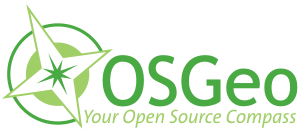Selected Presentations
Home > Presentations > Abstract details
Title
DEVELOPMENT OF “LOCAL DISASTER PREVENTION KIT” WITH FOSS4G AND OGC STANDARDS -RESEARCH PROJECT ON DISASTER RISK INFORMATION PLATFORM “BOSAI-DRIP” (2)-
Abstract
Most natural disaster risk information contains location (spatial) information, which means that disaster risk information is typical geo-spatial information. The map which represents spatial distributions of disaster risk plays an important role in activities of reducing disaster risk. Especially, WebGIS can integrate various disaster risk information. Furthermore WebGIS is easy way for local people to access disaster risk information. The advantage of FOSS4G and OGC standards is its superior ability to provide dynamic spatial information, compared with conventional web mapping systems. We have developed two open source software for multipurpose - 1) WebGIS which is based on FOSS4G and OGC standards named as “e-Community Map”; 2) web-based groupware named as “e-Community Groupware”. Two systems have great potential for local communities’ disaster prevention activity. The aim of this study is to develop disaster prevention kit for Japanese local people.
The kit is comprised of sub modules. In this study, two modules are introduced.
A disaster damage anticipation module is developed. The module advises damages, such as houses, human suffering, lifeline and evacuation shelter, to local people using various disaster risk information from social statistics, hazard maps and damage anticipation by local government. Hazard maps are overlaid on WebGIS via WMS (Web Map System), and a damage category is automatically estimated via WFS (Web Feature Service) and WPS (Web Processing System).
A town watching module is developed. Governments provide disaster risk information such as hazard maps. However, considering about local people’s disaster risk, local people have to make a detail map by town watching. Through town watching, they can check dangerous or useful places. The module can generate PDF which contains watching table and maps for printing. The module acquires some kind of map via WMS. After town watching, people can easily enter the investigation spot and sentences on web browser.
Authors
Hitoshi Taguchi - National Research Institute for Earth Science and Disaster Prevention
Yuichiro Usuda - National Research Institute for Earth Science and Disaster Prevention
Shinya Okada - National Research Institute for Earth Science and Disaster Prevention
Yoshiharu Mochizuki - Digital Earth Lab.
Toshinari Nagasaka - National Research Institute for Earth Science and Disaster Prevention

